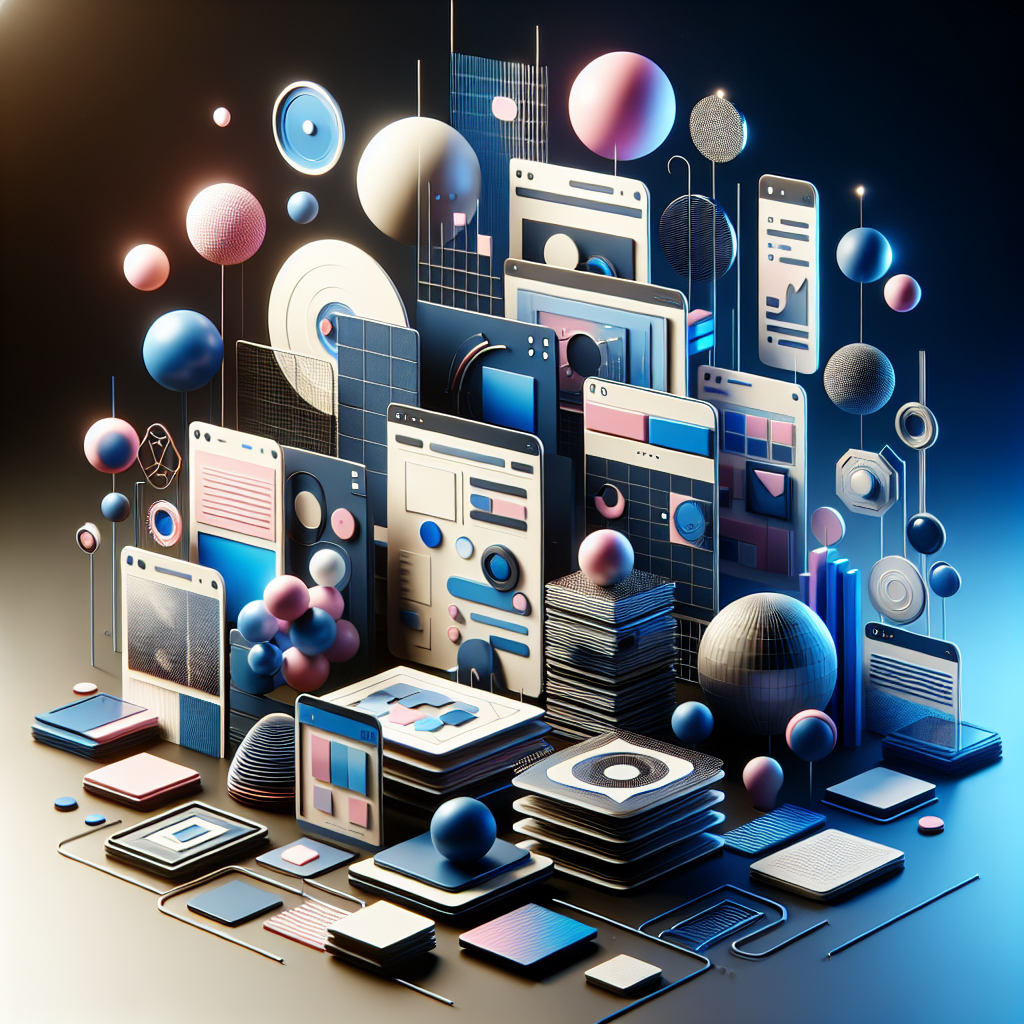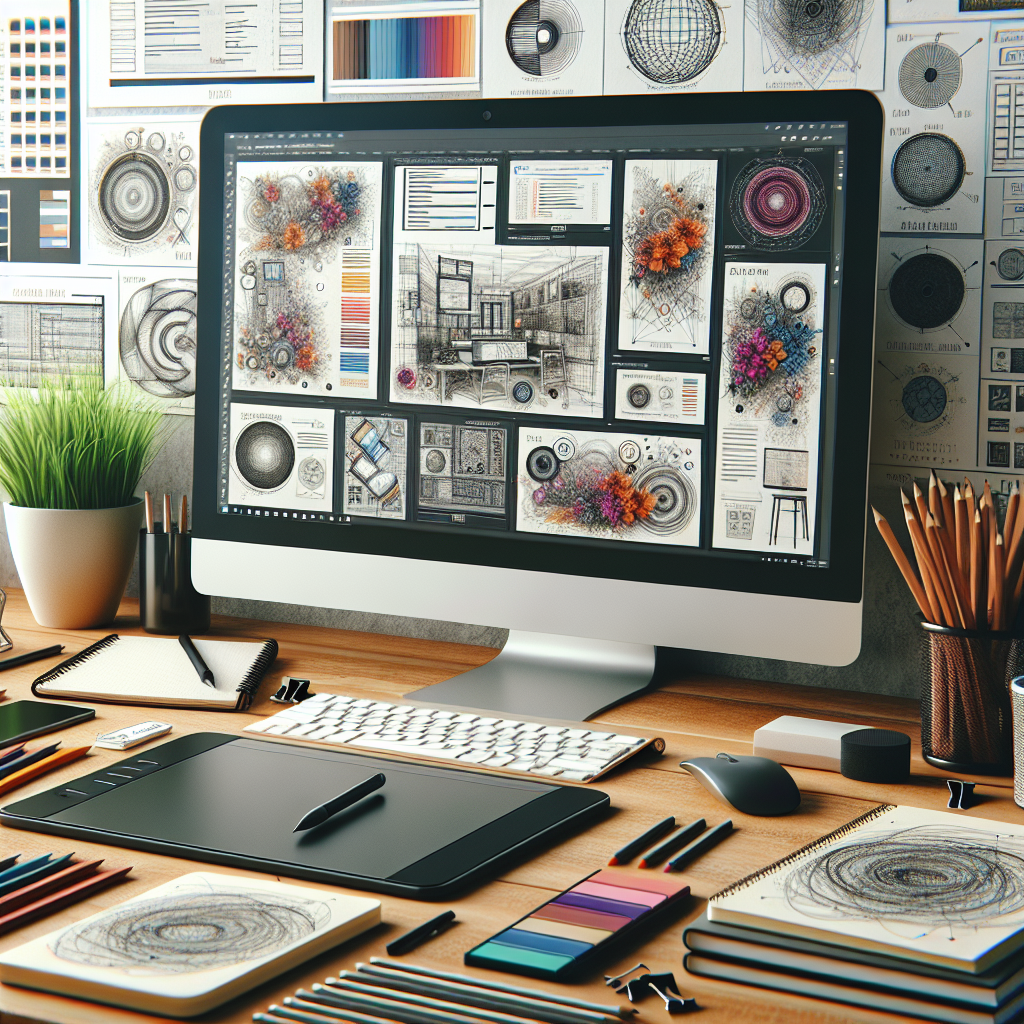In today’s digital landscape, creative web design is more important than ever. A well-designed website not only attracts visitors but also keeps them engaged, ultimately converting them into loyal customers. The fusion of aesthetics and functionality in web design plays a crucial role in enhancing user experience and promoting brand identity.
Creative web design encompasses several elements such as layout, color schemes, typography, and interactive features. These elements, when combined thoughtfully, can transform a mundane website into a captivating digital experience. The key is to strike a balance between visual appeal and usability, ensuring that the design is both attractive and intuitive.
If you’re looking to elevate your online presence with innovative web design, call us today at (817) 213-6090 to discuss your project with our experts. At SEON Experts, we specialize in crafting unique, user-centric websites that not only look great but also perform exceptionally well.
Current Trends in Web Design

Staying updated with the current trends in web design is essential for creating a modern, engaging website. One prominent trend is the use of minimalistic designs, which focus on simplicity and functionality. By eliminating unnecessary elements, these designs make it easier for users to navigate and find the information they need.
Another trend gaining traction is the integration of micro-interactions. These are subtle animations or design elements that respond to user actions, providing instant feedback and enhancing the overall user experience. Micro-interactions can be as simple as a button changing color when hovered over or as complex as an animated transition between pages.
Dark mode has also become increasingly popular, offering a sleek and modern look while reducing eye strain for users. This trend is particularly effective for highlighting colorful elements and making content stand out.
Additionally, asymmetric layouts are breaking the mold of traditional grid patterns, creating more dynamic and visually interesting designs. These layouts can guide users’ attention to specific areas of a page, making the overall experience more engaging.
Finally, the use of bold typography is a trend that continues to evolve. Large, striking fonts can capture attention and convey messages more effectively, particularly when combined with minimalistic designs.
By incorporating these current trends into your web design, you can create a site that is not only visually appealing but also highly functional and user-friendly.
Essential Elements of Creative Design

To craft a truly exceptional website, it’s crucial to understand the essential elements of creative design. These core components serve as the foundation upon which innovative and engaging designs are built.
First and foremost, responsive design is a must. With users accessing websites from a variety of devices, ensuring that your site looks and functions well on desktops, tablets, and smartphones is non-negotiable. A responsive design adapts seamlessly to different screen sizes, providing a consistent user experience.
Intuitive navigation is another key element. Users should be able to find what they’re looking for with minimal effort. Clear menus, logical site structure, and easily accessible search functions all contribute to a user-friendly navigation system.
The use of high-quality visuals cannot be overstated. Whether it’s professional photography, custom illustrations, or compelling videos, visuals play a significant role in capturing attention and conveying your brand’s message. High-resolution images and engaging multimedia elements can make a lasting impression on visitors.
Moreover, consistent branding is essential for creating a cohesive look and feel. This includes using a uniform color scheme, typography, and visual style throughout the site. Consistent branding helps build trust and recognition among your audience.
Lastly, incorporating interactive elements such as forms, buttons, and sliders can significantly enhance user engagement. These elements encourage visitors to interact with your content, leading to longer site visits and higher conversion rates.
By focusing on these essential elements, you can create a web design that not only stands out but also delivers an exceptional user experience.
Impactful Color Schemes and Palettes
Choosing the right color schemes and palettes is a critical aspect of creative web design. Colors not only enhance the visual appeal of a website but also play a significant role in conveying emotions and messages to the audience.
When selecting a color scheme, it’s important to consider color psychology. Different colors evoke different feelings—blue often represents trust and calmness, while red can signify energy and urgency. Understanding these associations can help you choose colors that align with your brand’s message and values.
Another key consideration is contrast and readability. High contrast between background and text colors ensures that your content is easily readable. For instance, a dark background with light text or vice versa can make a significant difference in user experience. Avoid color combinations that strain the eyes or make reading difficult.
Using a limited color palette is often more effective than incorporating too many colors. A balanced combination of two to four primary colors can create a harmonious and cohesive look. Tools like Adobe Color and Coolors can assist in generating appealing color schemes that work well together.
Additionally, it’s beneficial to incorporate accent colors. These are used sparingly to highlight important elements such as call-to-action buttons, links, or key pieces of information. Accent colors draw attention and can guide users through your website more effectively.
Lastly, consider the cultural context of your audience. Colors can have different meanings in different cultures. For instance, white is often associated with purity in Western cultures but can signify mourning in some Eastern cultures. Being mindful of these cultural nuances ensures that your color choices resonate positively with your target audience.
By thoughtfully selecting your color schemes and palettes, you can create a visually appealing and emotionally engaging website that resonates with your users.
Typography Tips for Unique Designs

Effective typography is a cornerstone of any creative web design. The right font choices can elevate your website’s aesthetics and enhance readability, ensuring that your content is both engaging and easy to consume.
First and foremost, consider the legibility of your fonts. While decorative and unique fonts can add character, they should not compromise readability. Opt for clean, simple fonts for body text, such as sans-serif fonts like Arial or Helvetica, which are generally easier to read on screens.
Pairing fonts is another essential aspect. A common practice is to use one font for headings and another for body text. This creates a visual hierarchy, guiding the reader’s eye through the content. For instance, you could pair a bold, attention-grabbing serif font for headings with a clean, minimalist sans-serif font for body text.
Don’t overlook the importance of font size and spacing. Adequate line height and letter spacing can significantly improve readability. Generally, a line height of 1.5 times the font size is recommended for body text. Similarly, ensuring sufficient spacing between letters prevents the text from appearing cramped.
Consistency is key in typography. Stick to your chosen fonts and styles throughout the website to maintain a cohesive look. Inconsistencies can make your site appear disorganized and unprofessional. Utilize a style guide to keep track of your typography choices and ensure uniformity.
Moreover, consider the emotional tone conveyed by your font choices. Fonts have personalities; a playful, rounded font can create a friendly atmosphere, while a sleek, modern font can convey professionalism. Align your font choices with the overall tone and message of your brand.
Lastly, make use of web-safe fonts or host custom fonts through services like Google Fonts or Adobe Fonts. Ensuring that your chosen fonts are accessible and render correctly across different browsers and devices is crucial for a consistent user experience.
By paying attention to these typography tips, you can create a unique and effective design that not only looks great but also enhances user engagement and readability.
Incorporating Multimedia Elements

Incorporating multimedia elements into your web design can significantly enhance user engagement and make your site more dynamic and interactive. Multimedia elements such as images, videos, animations, and audio can break up text, making your content more digestible and visually appealing.
**Images** are the most common multimedia elements used in web design. High-quality, relevant images can capture attention and convey messages more effectively than text alone. Ensure that your images are optimized for web use to maintain fast loading times, as slow-loading images can deter users.
**Videos** are another powerful tool. They can provide in-depth explanations, showcase products, and tell compelling stories that resonate with your audience. Embedding videos from platforms like YouTube or Vimeo can also save bandwidth and improve loading speeds. Remember to include captions or transcripts to make your videos accessible to all users.
**Animations** can add a layer of interactivity to your site. From simple hover effects to more complex animations, these elements can guide user behavior and highlight important information. However, use animations sparingly to avoid overwhelming visitors and ensure they do not detract from the user experience.
**Audio** elements, such as background music or podcasts, can enhance the ambiance of your website or provide valuable content in an easily consumable format. Ensure that audio elements have user controls, allowing visitors to mute or adjust the volume as needed.
When incorporating multimedia, always consider the balance between aesthetics and functionality. Too many multimedia elements can slow down your site and distract users. Aim for a cohesive design where multimedia elements complement the overall aesthetic and enhance the user experience.
By thoughtfully integrating multimedia elements, you can create a more engaging and memorable web design that captures and retains user interest. Ready to transform your website with creative multimedia elements? Call us today at (817) 213-6090 and let’s bring your vision to life!






